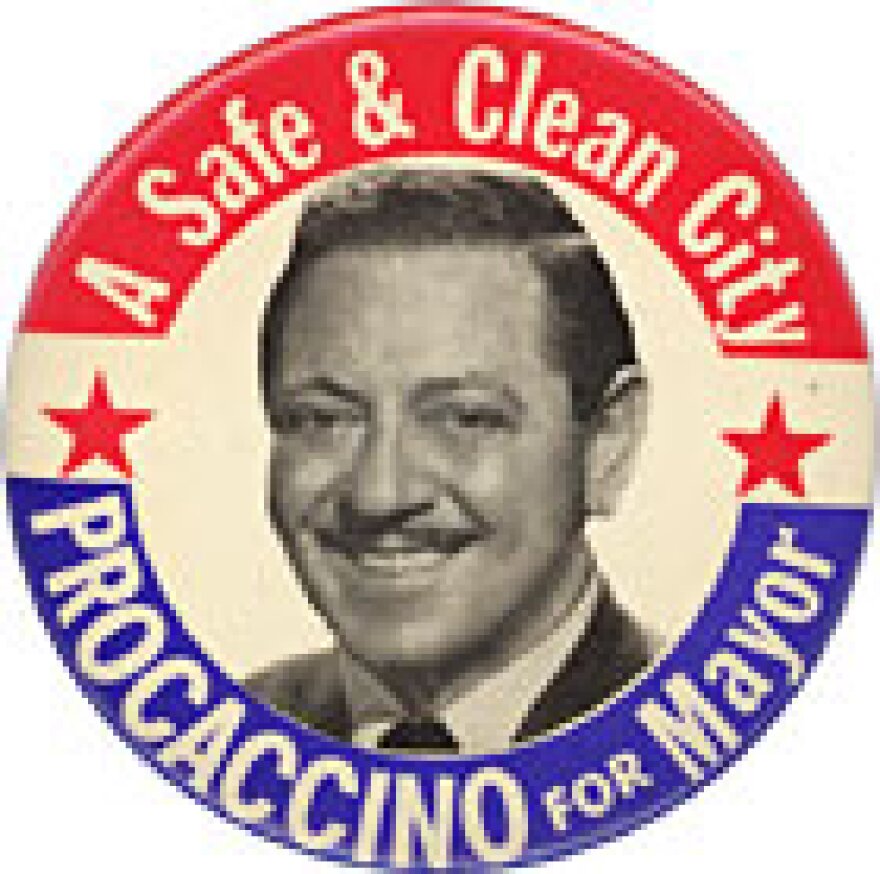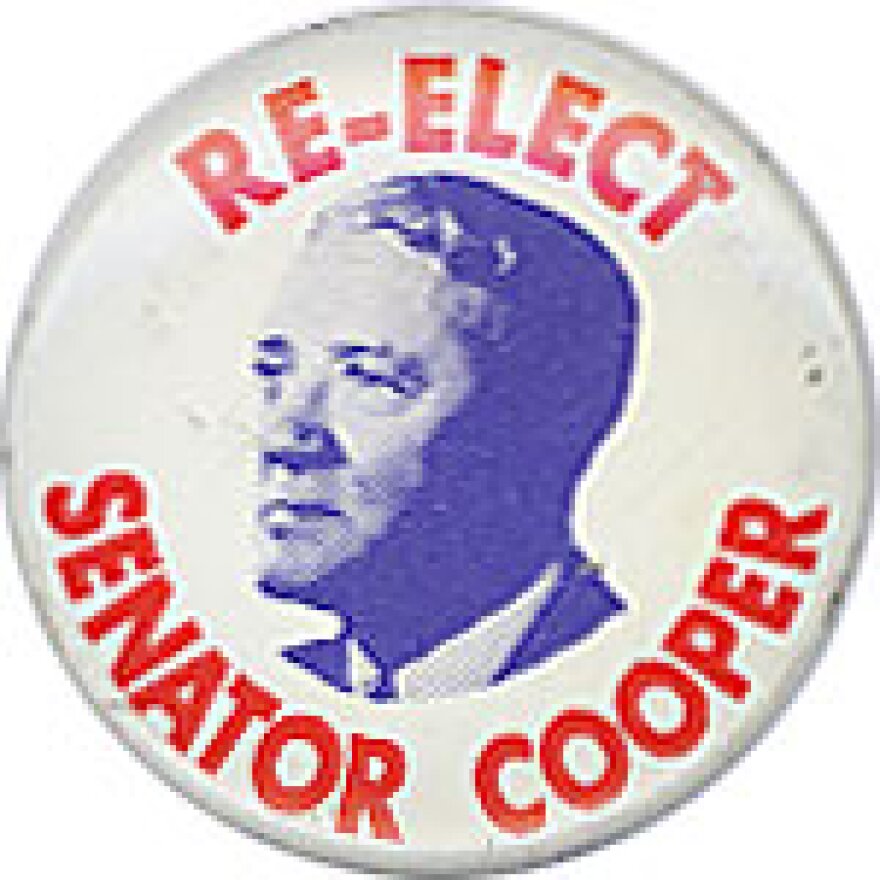

Q: I understand that if no candidate receives 40 percent in the primary for mayor in New York City, it goes to a runoff. Why? -- Arthur Leslie, Staten Island, N.Y.
A: If you mean why does NYC have a runoff, it stems from the results of the 1969 Democratic primary for mayor, in which the winner, city Comptroller Mario Procaccino, received just 33 percent of the vote. Procaccino, a strong law-and-order candidate, defeated former mayor Robert F. Wagner by just 31,000 votes (he got 29 percent) and Herman Badillo, the Bronx Borough president, with 28 percent, followed by writer Norman Mailer and Bronx congressman James Scheuer in single digits. Democrats were aghast at the prospect of being represented by Procaccino, who spent much of the campaign saying some rather intemperate things about race and civil rights. Ostensibly, they also felt that a nominee should have at least a modicum of support within the party, but there were no calls for a runoff following the mayoral primary of 1965, when Abe Beame won, also with less than 40 percent. What really irked them in '69 was that four liberals split the liberal vote and allowed the conservative Procaccino to squeak through. So they passed a law, requiring a runoff if no candidate reached the 40 percent mark.
Some, like Badillo, declared that the law was an effort to discriminate against black and Latino candidates. But the truth was that the law was a reaction to Procaccino. (Postscript: In November of that year, Procaccino and John Marchi, the Republican state senator who upset Mayor Lindsay in the GOP primary, split the conservative vote, resulting in Lindsay winning re-election on the Liberal and Independent lines with 42 percent.)
Democrats were all set to go through another runoff this year, when former Bronx Borough President Fernando Ferrer was thought to fall just short of 40 percent in the Sept. 13 primary against Rep. Anthony Weiner. (Weiner subsequently announced he would endorse Ferrer rather than face him in a runoff.) As it turned out, Ferrer did win enough votes to avoid a runoff, finishing with 40.15 percent, and will be the Democratic nominee against Republican Mayor Michael Bloomberg in November.
Q: Has anyone ever finished second in the NYC mayoral primary but rebounded to win the runoff? -- Fred Tauber, Arlington, Va.
A: Yes, it happened four years ago. Bronx Borough President Fernando Ferrer topped the Democratic field with 35 percent, and went into a runoff with Public Advocate Mark Green, who garnered 31 percent. The runoff, which turned ugly amid charges of racism, was won by Green 52 percent to 48 percent. Many of Ferrer's supporters stayed home in November or voted for the Democrat-turned-Republican billionaire Michael Bloomberg, a development that led to Bloomberg's improbable win.
The turnaround from primary to runoff also happened in the 1977 Democratic contest for City Council president (now the Public Advocate). Incumbent Paul O'Dwyer led the initial primary over Carol Bellamy by 31 percent to 25 percent. But in the runoff, Bellamy won a convincing 59 percent, en route to her election.
No election is too insignificant for the Political Junkie column.
Q: Who was the last person elected to the Senate as an independent from the start? Jim Jeffords of Vermont [the Senate's only independent] won three terms as a Republican and then became an independent in 2001, so he doesn't count. -- Martin Reese, Washington, D.C.
A: And by the same token, neither does Harry Byrd Jr. of Virginia, who was first elected as a Democrat in 1966 and then won twice more as an independent. The same goes for George Norris, who won three terms in Nebraska as a Republican before winning as an independent in 1936. Republican Bob Smith of New Hampshire was briefly an independent in 1999 (switching back to the GOP three and a half months later), and Dean Barkley of Minnesota, an independent, was appointed senator in 2002 following the death of Paul Wellstone by Gov. Jesse Ventura (himself an independent), but neither Smith nor Barkley was elected as an indie.
Now that I think of it, I don't believe that anyone has ever been popularly elected to the Senate initially as a true independent. Some guy named David Davis was elected from Illinois in 1876 as an independent, but that was in the days before senators were elected by the people; back then (prior to the 17th Amendment in 1913), senators were elected by members of their state legislatures, which was the case with Mr. Davis. Nearly every non-Democratic or Republican senator has instead been a member of a third party. For example, James Buckley was elected from New York in 1970 as a Conservative. Ernest Lundeen of Minnesota won in 1936 as a candidate of the Farmer-Labor Party.
Then there's Strom Thurmond. A former Democratic governor of South Carolina (and third-party presidential candidate in 1948), Thurmond was denied the Democratic nomination for the Senate in 1954. He then ran as a write-in candidate and won -- the only person to accomplish that feat in Senate history -- but once in office he was considered to be a Democrat.
Q: Slade Gorton was elected senator from Washington in 1980, defeating incumbent Democrat Warren Magnuson. He then lost his bid for re-election in 1986 to former Transportation Secretary Brock Adams. But then, in 1988, Gorton staged a comeback and was again elected to the Senate, defeating Rep. Mike Lowry a future governor. It is my understanding that Gorton was only the second person in history to lose his Senate seat but then, in a subsequent election, be returned to office. Do you know the identity of the other senator in this position? -- Bill Stephens, Tacoma, Wash.
A: If I understand your question correctly, there are more than just two who lost a Senate seat but then came back to win again years later. David Walsh, a Massachusetts Democrat, was elected in 1918, defeated in 1924, then came back to win the state's other Senate seat in a 1926 special election, which he held until his defeat in 1946. Republican Warren Barbour of New Jersey was elected in 1932, lost his seat in 1936, and then won a special election for the state's other seat in 1938. Guy Gillette, an Iowa Democrat, won a special election in 1936, was re-elected in 1938, and unseated in 1944. He came back to win the state's other Senate seat in 1948 and was defeated six years later. In West Virginia, Chapman Revercomb (R) was elected to the Senate in 1942, lost the seat after one term, and then won a special election in 1956 (which he lost two years later). John Sherman Cooper, a Kentucky Republican, probably had the biggest ups and downs of anyone on this list. He won a special election in 1946, lost the seat two years later, won another special election in 1952, promptly lost his bid for re-election two years later, and won still another special election in 1956, a seat he held until he retired after 1972.
There are also those who were appointed to the seat, lost their bid to keep it, and then won another seat later. For example, Alva Adams (D-CO) was appointed to the Senate in 1923, lost a bid to keep the seat the following year, but then won the state's other seat in 1932. And Howard Metzenbaum, an Ohio Democrat, was appointed to the Senate in 1974, lost the Democratic primary that year to John Glenn, and then came back to win the other seat in 1976.
Q: I know that the 1896 Supreme Court decision of Plessy v. Ferguson -- which backed "separate but equal" treatment of the races -- was overturned by the 1954 Brown v. Board of Education decision. My question: who was Plessy? And who was Ferguson? -- Norman F., New York, N.Y.
A: On June 7, 1892, Homer Plessy of Louisiana, who was part black, boarded a train in New Orleans and took a seat in the coach that was reserved for whites. He was arrested, as warranted by state law, after he refused to move to the "colored" car. After the Louisiana state courts upheld state law, Plessy appealed to the U.S. Supreme Court, which also affirmed the state courts.
The judge at the original trial was John Howard Ferguson. Although Ferguson had earlier declared that the Separate Car Act was "unconstitutional on trains that traveled through several states," he decided that the state could regulate railroad companies that operated only within Louisiana. Thus, he found Plessy guilty.
Q: Your April 28 column [regarding Sam Houston being the only person to win the governorship of more than one state] made me think of Harold Stassen, who served as governor of Minnesota in the early 1940s. Didn't he also run for governor of Pennsylvania (when he wasn't running for president)? -- Dan Domike, Seattle, Wash.
A: You are correct. Stassen, who was governor of Minnesota from 1939 until he resigned in 1943 to join the Navy, also sought the Republican gubernatorial nomination in Pennsylvania in 1958. Challenging the GOP organization's endorsement of pretzel manufacturer Arthur McGonigle, Stassen, then 51, ran an energetic effort, but ultimately lost the primary 53 percent to 32 percent.
Pigpen: Following the discussion in the Sept. 12 column about Pigasus the Pig and his (her?) "bid" for the 1968 Democratic presidential nomination, Dean Blobaum of Chicago tells us that Pigasus "was arrested by the Chicago police on Aug. 23, 1968, along with five of his Yippie supporters. According to Jerry Rubin, a Chicago policeman told them, 'You guys are all going to jail for the rest of your lives -- the pig squealed on you.'"
This Day in Political History: Sandra Day O'Connor becomes the first woman on the U.S. Supreme Court as the Senate votes 99-0 to confirm her (Sept. 21, 1981).
Copyright 2022 NPR. To see more, visit https://www.npr.org.



